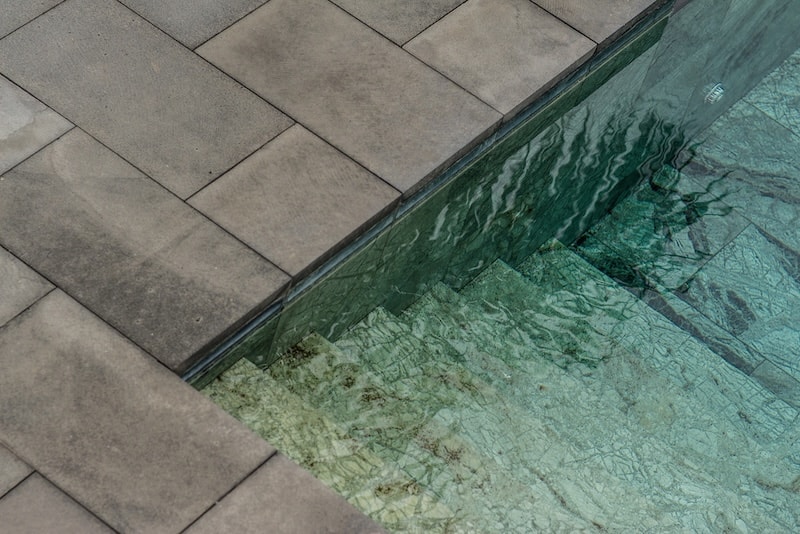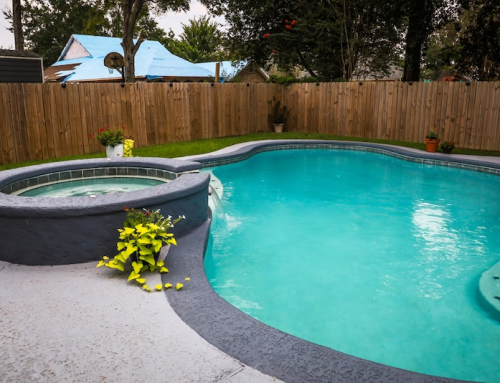Yes—there is a cheap way to redo a pool deck, but going too cheap often leads to cracked surfaces, peeling coatings, and costly do-overs within a year. Many homeowners search for quick fixes or budget solutions, especially when dealing with Florida sun, foot traffic, and aging concrete.
The problem? Most low-cost options don't hold up and can make things worse. A worn or poorly resurfaced pool deck not only hurts curb appeal but also becomes a safety risk.
The good news is that there are budget-friendly options that actually last, without sacrificing quality. Whether you're a homeowner trying to save or someone weighing a DIY kit versus professional help, understanding the real cost of each option makes all the difference.
Learn which methods give you the most value without falling into the trap of short-term savings that don't stick.
Why Homeowners Search for the Cheapest Pool Deck Solution
Redoing a pool deck isn't cheap. Between labor costs, material prices, and the size of your pool area, the total can climb fast. Many homeowners try to cut costs by choosing quick fixes or skipping professional help.
The idea is to save money now, but that often means paying more later.
Cheap options may crack, fade, or become slippery due to the sun, water, and pool chemicals.
A poorly done pool deck project can even create safety hazards.
Slippery surfaces, loose tiles, or uneven pavers increase the risk of falls, especially around wet areas.
What seems like a smart choice upfront can lead to expensive repairs. That's why it's important to look beyond price alone. With the correct materials and regular maintenance, you can build a safe space that lasts. The goal isn't just cheap—it's lasting quality for every square foot of your outdoor living space.
The Usual Low-Cost Options (And Their Hidden Costs)
Going cheap on a pool deck may seem smart at first, but shortcuts come with long-term risks. Many homeowners try paint-on coatings or DIY kits to freshen up their pool area. These products offer quick results but often lack the durability needed for wet surfaces, heavy foot traffic, and changing weather conditions.
Low-cost overlays are another option, but when bonding fails or prep work is skipped, cracks and peeling appear fast. Water seeps in, damaging the concrete underneath and creating slippery, unsafe surfaces.
Here's what you risk with bargain fixes:
- Paint-on coatings fade and peel after just one season, especially if the pool deck isn't maintained properly or exposed to harsh pool chemicals.
- DIY kits often skip critical steps like power washing, priming, or using the right tools, leading to poor slip resistance and uneven finishes.
- Cheap overlays may look good at first, but can lift or crack when installed without the right materials or under changing weather conditions.
These shortcuts often cost more in the long run. Replacing or repairing damaged areas later adds labor costs and delays your backyard use.
Budget-Friendly and Smart: Resurfacing as the True Value Option
Pool deck resurfacing isn't about going cheap—it's about getting value that lasts. Resurfacing means applying a concrete overlay over your existing deck to create a fresh, durable finish. You can learn more about costs and methods in this pool deck resurfacing guide.
Here's why it's a better investment:
- Resurfacing starts at a lower cost per square foot than full replacement, especially compared to poured concrete or natural stone.
- Stamped concrete or spray textures add slip resistance and curb appeal without breaking the budget.
- Long-term savings come from fewer repairs, low maintenance, and a surface that stands up to wet conditions when installed with the right materials.
With proper care and lighter colors that stay cool, resurfacing creates a safe, slip-resistant, and beautiful pool deck that performs.
Affordable Resurfacing Materials That Still Look High-End

A pool deck doesn't need luxury materials to look stylish and perform well. There are several resurfacing options that give a high-end feel without the high-end price. These choices are ideal if you want a beautiful finish that lasts, even with heavy use around a ground pool.
Brushed Concrete Overlays
This is one of the most budget-friendly resurfacing options. It involves a concrete overlay finished with a broom or brush for texture. The result is a clean, slip-resistant surface that holds up well against foot traffic and pool water.
- Easy to maintain with regular power washing
- Works well with lighter colors to reflect heat
- Simple, classic look that blends with any backyard style
COST: Brushed concrete overlays typically cost between $4 and $7 per square foot, depending on design complexity, surface prep, and labor.
Spray Knockdown Texture
Often seen around hotel pools, this technique involves spraying and troweling a textured finish onto the pool deck. It provides excellent slip resistance and stays cool underfoot.
- Hides flaws in existing concrete
- Reduces heat retention on sunny days
- Non-slip surface ideal for wet areas
COST: Spray knockdown texture ranges from $3 to $10 per square foot, based on the deck size, prep needs, and texture design.
Stamped Overlay (Entry-Level Finishes)
Stamped concrete overlays copy the look of natural stone, tile, or brick, without the cost of full material installs. Entry-level patterns are more affordable but still elevate the look of your outdoor space.
- Offers slip resistance with texture
- Durable when maintained properly
- Adds a touch of elegance for less
COST: Entry-level stamped overlays usually cost between $7 and $20 per square foot, depending on pattern, material quality, and installation labor.
When to Skip Expensive Extras and Still Get Curb Appeal
You don't need premium stone or decorative tile to upgrade your pool area. Focus on color, texture, and safety instead.
- Use classic textures with subtle tones
- Stick to lighter shades to keep surfaces cooler
- Choose slip-resistant finishes that prevent slips on wet surfaces
No matter the style, selecting the right materials for your pool deck resurfacing makes all the difference in terms of value and safety.
Cheap Isn’t Always the Smartest Route
Going for the lowest price on a pool deck might feel right in the moment, but quality matters more. Cheap fixes often fail fast, especially around water, heat, and foot traffic.
A poorly done deck can crack, peel, or become slippery, putting your ground pool at risk. Investing in durable, low-maintenance materials from the start saves money long-term.
Creative Resurfacing Solutions recommends resurfacing options that balance cost, safety, and style. Choosing the right materials, installed with the right tools, creates a non-slip surface that lasts for years. It's the smarter way to build a safe space without sacrificing curb appeal.
Frequently Asked Questions
What is the cheapest way to redo a pool deck?
The cheapest way to redo a pool deck is using a brushed concrete overlay, which costs around $4–$7 per square foot. It provides a durable, non-slip surface with a clean, classic look at a lower cost than full replacement or decorative stone.
How long does pool deck resurfacing last?
When installed with the correct materials and maintained properly, pool deck resurfacing can last 10 to 15 years. Durability depends on weather conditions, foot traffic, and how often the surface is cleaned and sealed.
Is DIY pool deck resurfacing a good idea?
DIY pool deck resurfacing can save on labor costs but often leads to poor results if not done correctly. Skipping prep steps or using low-quality products can cause cracks, fading, and poor slip resistance.
Which resurfacing material is best for a non-slip pool deck?
Spray knockdown texture is one of the best resurfacing options for a non-slip surface. It's textured, stays cool underfoot, and works well in wet pool areas.
Can you resurface a pool deck with cracks?
Yes, minor cracks can be repaired before applying a concrete overlay during resurfacing. However, large structural issues may require additional prep or partial replacement to ensure proper bonding.






